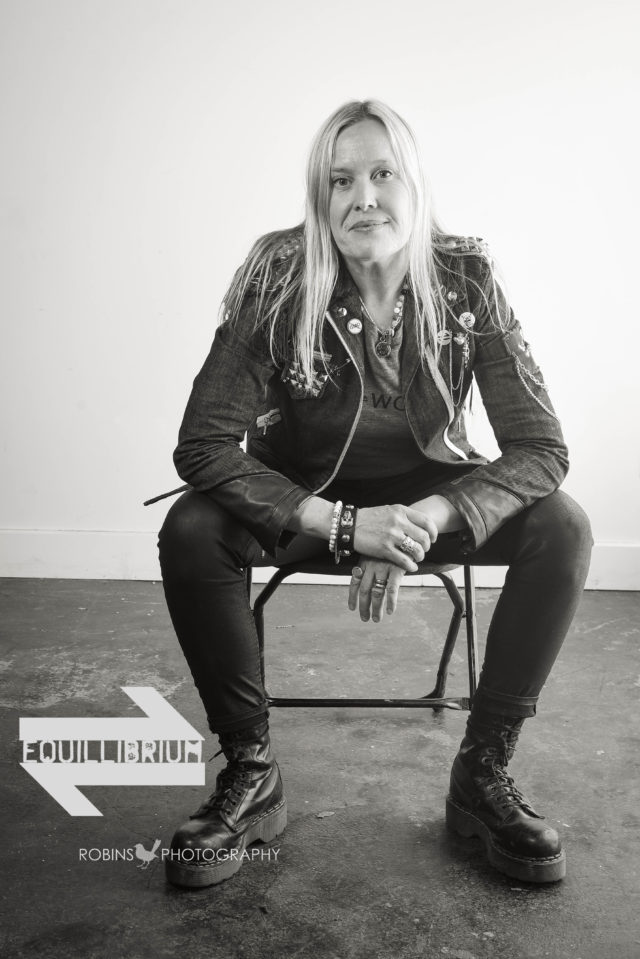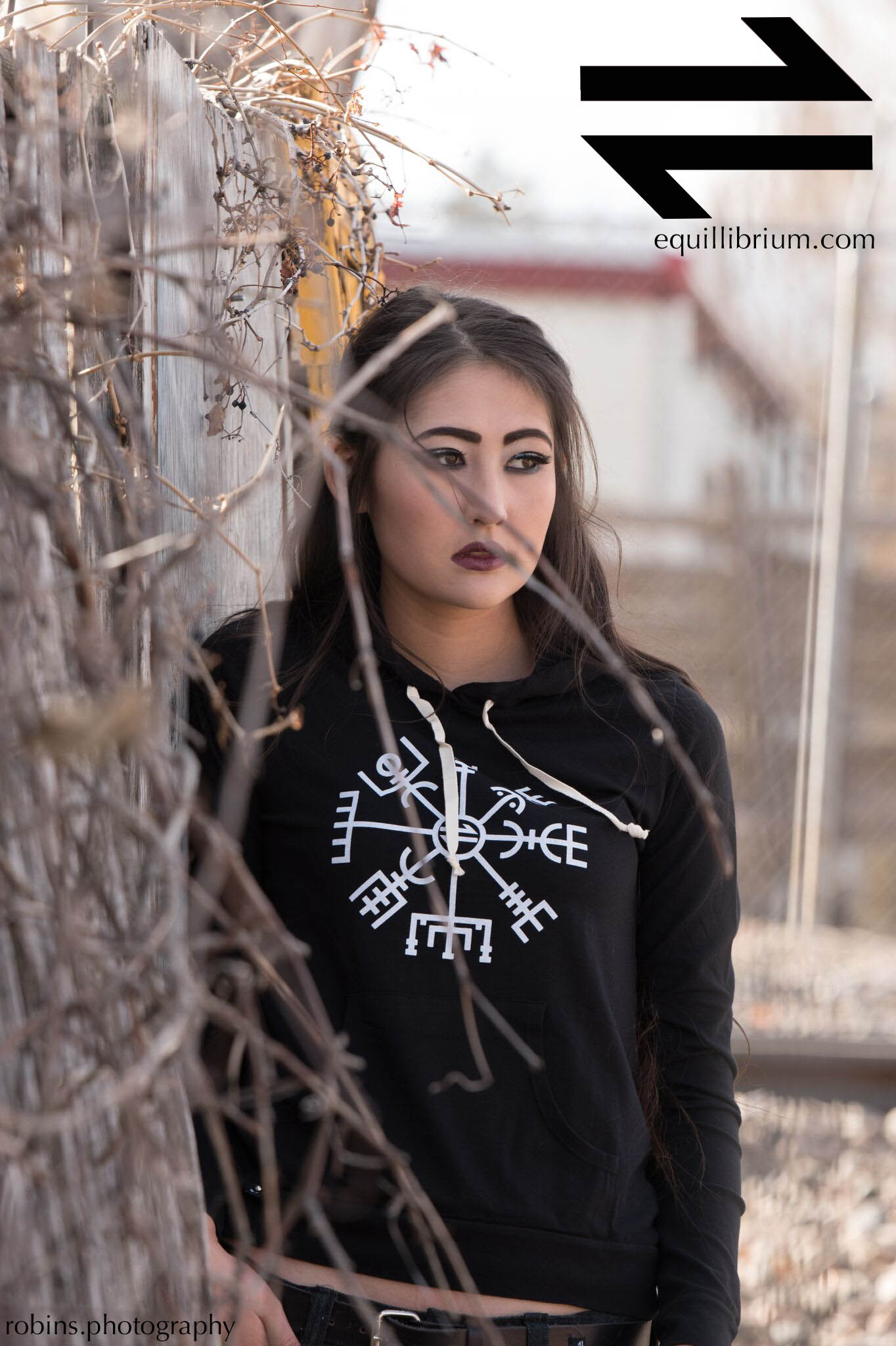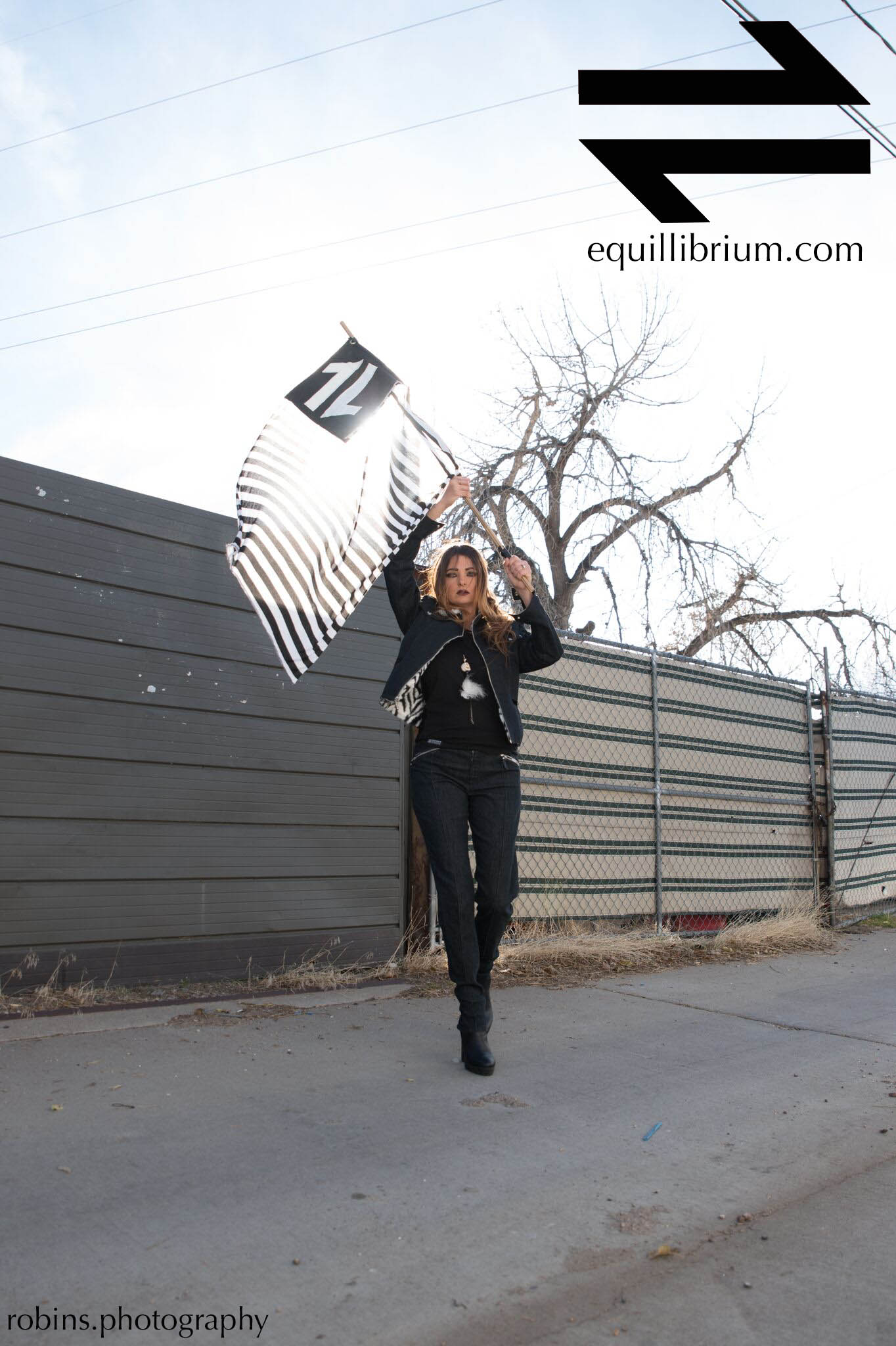
Just about every sector of business is geared toward sustainability these days. Sustainable agriculture, energy and tourism are all a given, but sustainable fashion is just beginning to disrupt the traditionally wasteful mainstream fashion industry.
Denverite Deb Henriksen, owner and founder of the rocker-chic brand Equillibrium, is poised to keep moving the fashion industry’s momentum forward. Her mission is to educate others about their own consumerism while bringing her sense of style to life with responsibly sourced textiles and materials.
Henriksen owns a storefront, and creates and sells clothes made of sustainable textiles such as organic cotton, bamboo and hemp. The idea for Equillibrium was born in 1998, when Henriksen began to dream of having her own eco-friendly fashion boutique. In 2000, Equillibrium began as a wholesale brand that was carried in skate and snowboard shops around Denver and Breckenridge. She opened her first store in 2004 (now located on West Custer Place) and hasn’t stopped since.
Henriksen originally hails from Naperville, Illinois, but she moved to Fort Collins in 1990 to study environmental health at Colorado State University.
“There were a lot of cowboys back then,” Henriksen says. “Everyone had on their big cowboy buckles, and I rolled up on my skateboard.” In school her focus was on toxicology analysis, studying human illness from environmental exposures. She says it was a lot of technical text and analysis, but learning about how humans adversely affected the environment (and vice versa) has had a profound influence on her brand.

In 1995, Henriksen moved to Georgetown for an internship with the health department of Clear Creek County, then to Breckenridge to work in skate and snowboard shops. A couple of years later she came down from the mountains for a job as a registered environmental technician and health safety officer in Denver, but she found herself wanting for more.
“I always had a love for fashion,” Henriksen says. She’d taught herself how to sew after learning how to make patchwork pillows in a junior high economics class, then worked in retail stores, tailoring and altering clothes that had been damaged in fitting rooms, as well as her own clothes. “The sewing machine is my power tool,” she says.
For the past 18 years, Henriksen has found her calling in providing a sustainable brand (influenced by the likes of Alexander McQueen, Betsey Johnson and Vivienne Westwood) that surrounds her passions: high fashion, skateboarding and science, while educating others about the impact of their buying choices.
Manufacturing clothes is a high-impact, wasteful endeavor the world over. It’s difficult — to say the least — to pin down where clothes are sourced from. After oil, the textile apparel industry is the second biggest industrial polluter on the planet, contributing to 10 percent of the world’s carbon emissions, along with harmful chemicals, dyes and textile waste. (Let’s not even get into the effects of synthetic fabrics, such as polyester and vinyl.) According to 350.org, a nonprofit climate justice website that’s dedicated to using renewable energy, before industrialization began in the 18th century, the Earth’s atmosphere contained 280 ppm (parts per million) of carbon dioxide. Scientists have said that the atmosphere would reach its threshold at 350 ppm. However, carbon dioxide levels crossed that limit in 2013 and are now over 400 ppm.
“It’s irreversible,” Henriksen says. “We [humans] are the catalysts, and we can either speed it up or slow it down.” Consumers have the choice to change their purchasing habits to benefit the world’s overall environmental health.
“A dollar is a vote for the type of world we want to be in,” Henriksen says. She urges others to take a look at their belongings and ask themselves: What are you buying?
LIM College, a New York City fashion school, published a study, “In Shopping Trends Among 18-37 Year-Olds” that says millennials are in favor of sustainability and social change, but environmental impact was low on their list when it came to buying eco-friendly clothing. Only 34 percent out of a sample of 685 students and alumni said that they would buy a product if it was sustainably produced and eco-friendly, compared to the 95 percent who would buy for ease of purchase and value, and 92 percent for uniqueness. However, 90 percent said that they would “help create more sustainably produced products by convincing businesses and government to alter existing practices” and “abandon a product or brand
for eco-unfriendliness.”
There are definitely some hurdles when it comes to shopping for sustainable clothes, such as the lack of options in the market and intimidating prices. However, to Henriksen, quality over quantity is a mantra to keep in mind when it comes to purchasing. Her clothes come at a higher price point, true, but she says if you divide it, the garment will be free after 10 wears (and last longer), whereas inexpensive clothing often doesn’t last long enough to pay for itself. One thing Henriksen does encourage consumers to do is research; find out how clothes are sourced, and become aware of the disconnect between the buyer and the good. The fast fashion movement, led by retailers who sell mass-produced clothing at very inexpensive prices, has caused consumers to buy more rapidly and remain unaware of its environmental effects.

To combat the fast fashion movement, Henriksen buys local fabrics whenever possible. She sources materials from fabric representatives and close-out fashion fabrics, and has employed cut-and-sew professionals and bag manufacturers from the state. “It’s upcycling in a different way,” she says. The downside is that because she only uses sustainable materials, it can sometimes limit what she can create. Currently, she’s preparing for the Jackalope Indie Artisan Fair in Denver on May 19-20.
Since Henriksen began Equillibrium in 2000, she’s noticed the slow fashion movement progress among celebrities and the media. In 2017, the documentary RiverBlue was released, providing an inside look at the denim industry and how textile mills in countries such as China, Bangladesh and India are polluting riverways and inadvertently affecting workers, residents and agriculture. Despite more exposure of the issue, there’s still a lot of work left to do.
“We are seeing undeniably negative impacts from unconscious consumption and no value being placed on the environment,” Henriksen says. “If for no other reason than for self-preservation, consumer behavior must be observed, evaluated, and changed on a mass scale. A movement toward conscious consumption must be practiced by all of us.”















